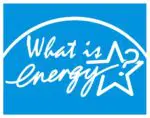You’ve seen the logo somewhere, that ubiquitous white star on a blue background: on a furnace, your refrigerator, maybe the corner of the box holding your new TV. You’ve definitely seen it on your monitor while your computer was booting up. But what is it? What is “ENERGY STAR,” and why has it been plastered all over a dizzying array of products for the past two decades?
The Energy Star program was originally developed in the United States by the Environmental Protection Agency, in conjunction with the Department of Energy. Introduced in 1992, the voluntary standard was designed to encourage and promote energy efficient products, in order to reduce energy consumption and the production of greenhouse gases. Since then, the program has expanded to Canada, as well as the European Union and a number of other countries.
What is Energy Star?
Energy Star Canada is a voluntary partnership between the Government of Canada and industry to make high efficiency products readily available and visible to Canadians. Natural Resources Canada (NRCan) administers and promotes use of the ENERGY STAR name and symbol in Canada under an agreement with the U.S. Environmental Protection Agency (EPA).
The Energy Star rating has been awarded to tens of thousands of products, including computer equipment, kitchen appliances, air conditioners, furnaces, TVs, lightbulbs, and even entire homes. The specifications for the Energy Star standard varies for each product type, but most ES-certified products use 20 to 30 percent less energy than comparable products, without any loss in performance. Thanks to the global push to develop new energy-powered products that are less power-hungry than their predecessors, the efficiency of many appliances has skyrocketed. For example, modern clothes washers use 68% less energy than those manufactured in 1990.
Buying products certified by the Energy Star program is an excellent way to cut your electricity and gas bills. The next time you replace your washer, freezer, TV, water heater, or just about any other electricity- or gas-consuming appliance in your home, look for the star. It’ll save you money, and it will send the message to manufacturers that energy efficiency is an important quality in any and all products.
For more information on the Canadian Energy Star program, you can find the specifications for Energy Star-certified products on the Natural Resources Canada site. The NRC also provides a list of the most efficient products and appliances in a number of categories.
Buy blue, keep your country green, and keep your bank account in the black.
What makes a product Energy Star? How Energy Star works
Having an Energy Star certification means that a product has met or exceeded technical specifications for high efficiency. Guidelines vary for every product – below, we’ve included the energy performance standards for some common household Energy Star rated appliances.
Energy performance standard for clothes dryers |
|||
| Product type | Minimum combined energy factor* | ||
| kg/kWh** | lb/kWh*** | ||
| Conventional standard electric | 1.69 | 3.73 | |
| Conventional compact electric 120 V | 1.64 | 3.61 | |
| Conventional compact electric 240 | 1.48 | 3.27 | |
| Ventless compact electric 240 V | 1.16 | 2.55 | |
| Ventless combination washer-dryer electric | 0.94 | 2.08 | |
* A measure of energy efficiency that reflects the energy use of the clothes dryer.
** Kilograms per kilowatt-hours
*** Pounds per kilowatt-hours
Energy Performance Standards for Dishwashers
| Size category | Maximum total annual energy consumption (kWh) | Water consumption (litres/cycle) |
| Compact | ≤ 222 kWh | ≤ 13.25 |
| Standard | ≤ 307 kWh | ≤ 18.93 |
Energy performance standard for electric ranges
| Product type | Maximum allowable energy consumption, kWh/year |
| Ranges | 2.0V + 458 |
| Cooktops | 258 |
| Ovens | 2.0V + 200 |
V = Oven volume in litres
Energy performance standard for microwave ovens
| Type | Standby power in watts |
| Microwave-only oven | ≤ 1.0 |
| Countertop convection microwave oven | ≤ 1.0 |
| Built-in convection microwave oven | ≤ 2.2 |
| Over-the-range convection microwave oven | ≤ 2.2 |
Energy performance standard for dehumidifiers
| Portable dehumidifier | |
| Product capacity (pints/day) | Minimum integrated energy factor (litres/kWh) |
| 25.00 or less | 1.30 |
| 25.01-50.00 | 1.60 |
| 50.01 or more | 2.80 |
| Whole-home dehumidifier | |
| Case volume (cubic feet) | Minimum integrated energy factor (litres/kWh) |
| 8.0 or less | 1.77 |
| More than 8.0 | 2.41 |
To view the performance standards for other appliances and products, you can visit the NRCAN website here.
Why does Energy Star matter?
There are a multitude of reasons for why the Energy Star program is important. For one thing, Energy Star backs energy-efficient products readily available and visible to consumers. Additionally, it enforces a set of performance standards and qualifications for every product labelled so that consumers know that their appliances are truly energy-efficient.
With easily accessible energy efficient appliances comes saving energy for all consumers regardless of if they’re residential, industrial, or commercial. That means not only reduced energy bills but also reduced emissions in relation to energy usage and production – with climate change making a larger and larger impact every year, every effort to reduce electricity use is important for preserving the environment.
Why buy Energy Star products?
Below, we’ve compiled a list of reasons why consumers and organizations purchase Energy Star products:
- High quality assurance: Energy Star certification ensures that the products consumers are receiving perform just as well or better than standard products without compromising performance.
- Preserving the environment: Using Energy Star certified products allows consumers to reduce the amount of energy they used and therefore the amount of greenhouse gases emitted into the atmosphere.
- Testing and certification assurance: Products certified by Energy Star have their energy usage claims verified and meet strict efficiency standards. Additionally, products and appliances are certified by an independent party.
- Save money: Using high efficiency Energy Star appliances means cutting down on your energy usage and lowered power bills.
- Save energy – Products certified by Energy Star are typically in the top 15 to 30% of their class for energy performance.
- Save time – The Energy Star symbol is a short-cut to finding the top energy performers when you’re shopping for products.
What are the economical impacts of Energy Star?
Energy Star supports transitioning towards a clean energy economy via fostering jobs, economic development, and greater competitiveness. For example, over 800,000 Americans are employed in the installation or manufacturing of Energy Star certified appliances, according to Energy Star.
As stated on the Energy Star website, Energy Star has helped to save families and businesses nearly 500 billion kilowatt-hours of electricity and avoid $39 billion in energy costs in 2019 alone via its certified products, homes, buildings, and plants.
Overall, since 1992, Energy Star alongside its partners have helped families and businesses save 5 trillion kilowatt-hours of electricity and avoid more than $450 billion in energy costs.
What are the environmental benefits of Energy Star?
As mentioned above, Energy Star has helped save nearly 500 billion kilowatt-hours of electricity and avoid $39 billion in energy costs in 2019 alone – these savings resulted in associated emissions reductions of around 390 million metric tons of greenhouse gases, otherwise equivalent to 5% of the United States’ total greenhouse gas emissions.
Additionally, reductions of 220,000 short tons of sulfur dioxide, 220,000 short tons of nitrogen oxides, and 27,000 short tons of fine particulate matter (PM2.5) occurred in conjunction with the energy costs saved by Energy Star.
In terms of air pollution, Energy Star was responsible for $7 – 17 billion in public health benefits in 2019.
Overall, throughout the lifetime of the Energy Star program, for every dollar of EPA investment, 3 metrics tons of GHGs have been reduced.
How does Energy Star for buildings work?
Businesses can use Energy Star tools and resources to identify cost-effective approaches for managing energy use in buildings and plants, enabling strengthened competitiveness, increased profits and reduced energy usage.
Energy Star offers the Energy Star Portfolio Manager tool online to help businesses measure and track energy, water, waste and materials for commercial properties. For eligible buildings, the tool calculates a 1–100 ENERGY STAR score, which has become the industry standard for rating a facility’s energy performance.
In regards to industrial plants, Energy Performance Indicators provide large companies with information to assist them in making smart investment decisions. Another program of interest is Energy Star Tenant Space, which is an EPA recognition to reduce utility bills and greenhouse gas emissions in leased spaces and buildings.
What is Energy Star Canada Awards?
The ENERGY STAR Canada Awards recognize businesses and organizations that have made outstanding contributions to protecting the environment through superior energy achievements in Canada.
Various awards are available and are categorized as product awards, new homes awards and existing commercial and institutional buildings awards.
A list of the available rewards has been compiled below:
Product Awards:
- Manufacturer / Product Brand Owner – Appliances
- Manufacturer / Product Brand Owner – Commercial Products
- Manufacturer/ Product Brand Owner – Electronics
- Manufacturer / Product Brand Owner – Fenestration Products
- Manufacturer / Product Brand Owner – HVAC Products
- Manufacturer/ Product Brand Owner – Lighting Products
- Retailer – National and Regional
- Utility / Program Administrator – Provincial and Regional
- Advocate
- Promotional Campaign of the Year
- Promoter – ENERGY STAR Most Efficient
- Recruit (nominations are put forth by ENERGY STAR Canada)
- Sustained Excellence (nominations are put forth by ENERGY STAR Canada)
- Special Recognition (nominations are put forth by ENERGY STAR Canada)
New Homes awards:
Builder
- Small builder: A single entity building (1-49) homes
- Mid-size builder: A single entity building (50-249) homes
- Large builder: A single entity building (250 or more) homes
Existing Commercial and Institutional Buildings awards:
- Commercial Building of the Year (no application required)
- Institutional Building of the Year (no application required)
To request an application form, you can visit this page from NRCAN. To see a description of each award, you can visit this page.
High efficiency vs Energy Star: What’s the difference?
As mentioned earlier, a product with the Energy Star label means that product has met or exceeded technical specifications for high efficiency.
High efficiency on its own isn’t a standard definition – so without Energy Star labeling, a product claiming to be high efficiency could very well be above average, about average or even below average in comparison to similar products on the market.
Some examples of specific technical specifications from Energy Star are listed below to help you get a better idea of the difference between high efficiency and Energy Star labelling:
- Qualified refrigerators are at least 15% more efficient than the minimum federal efficiency standard.
- Qualified TVs consume 3 watts or less when switched off, compared to a standard TV, which consumes almost 6 watts on average.
- Office equipment that qualifies automatically enters a low-power “sleep” mode after a period of inactivity.
- Qualified light bulbs (CFLs) use two-thirds less energy than a standard incandescent bulb and must meet additional operating and reliability guidelines.
- Qualified furnaces offer a rating of 90% AFUE or greater, which is about 15% more efficient than the minimum federal efficiency standard.












